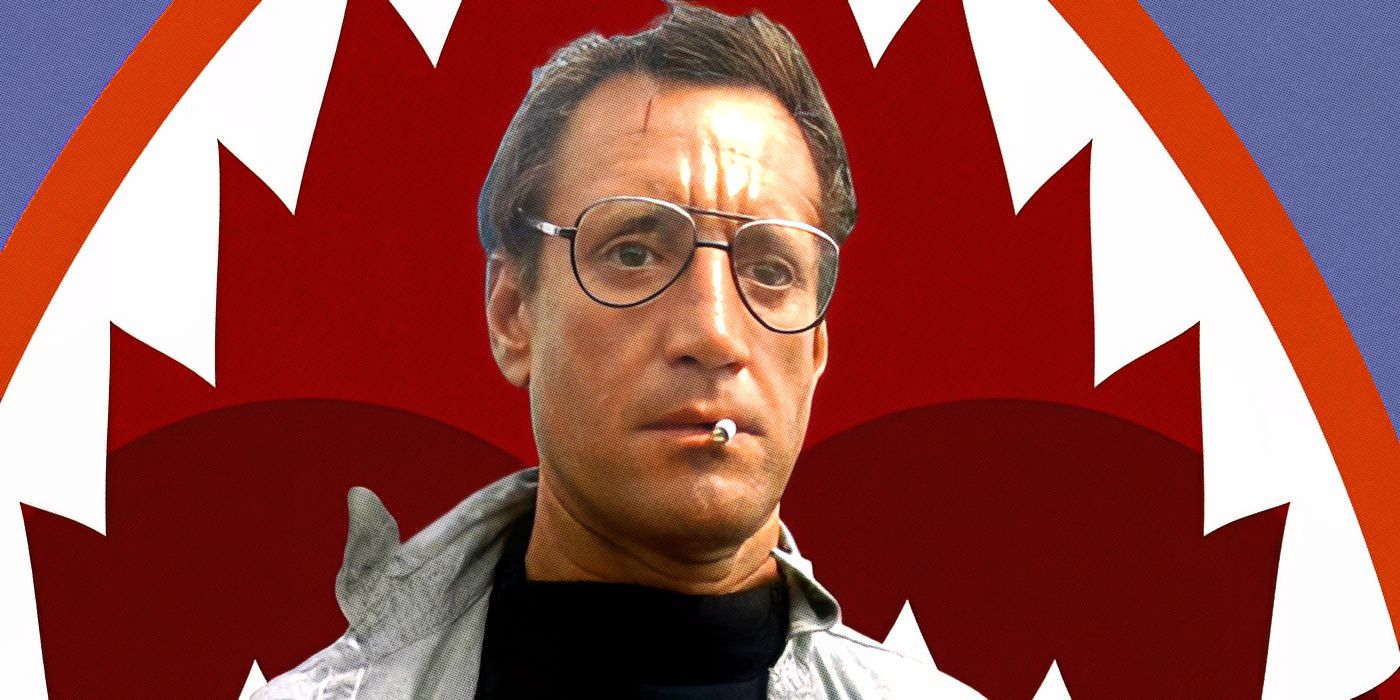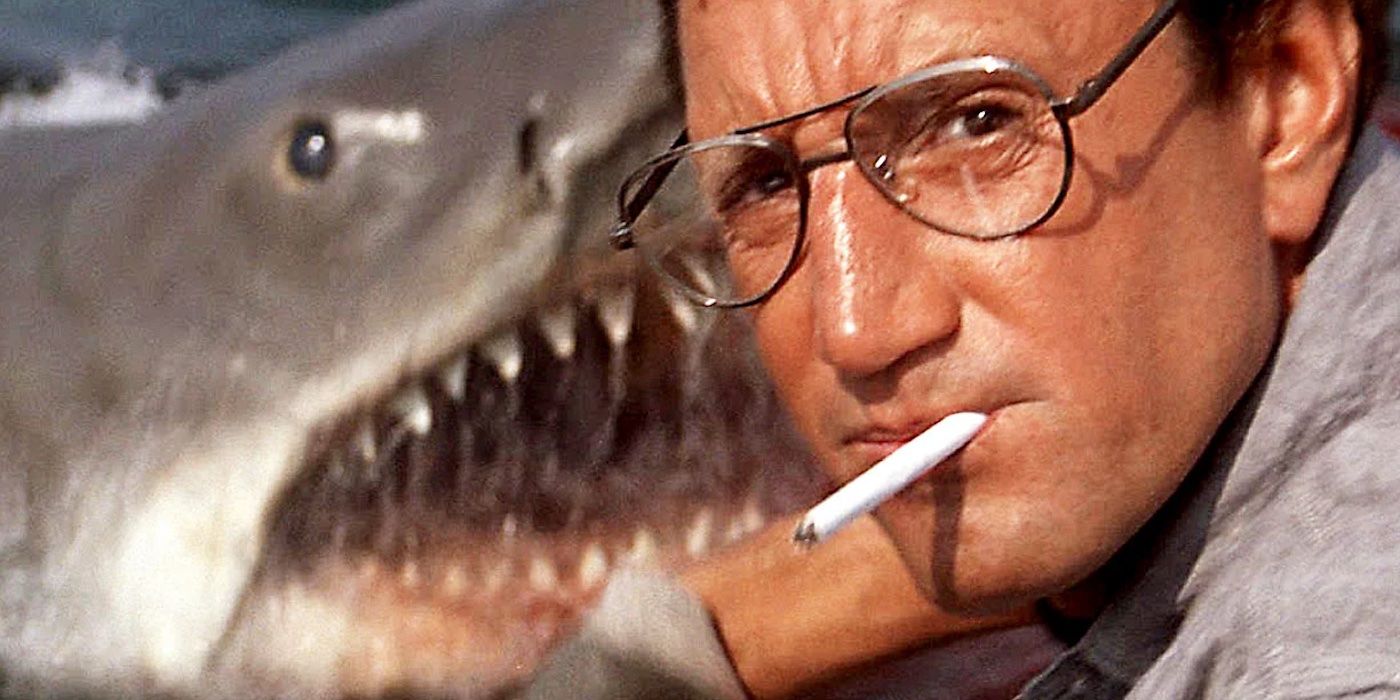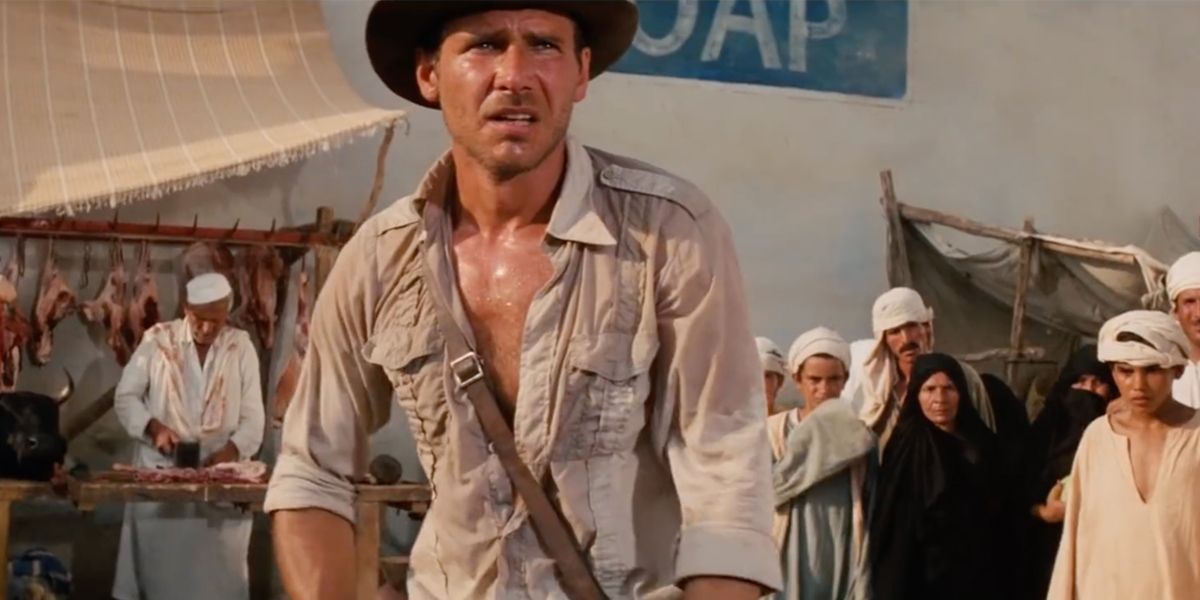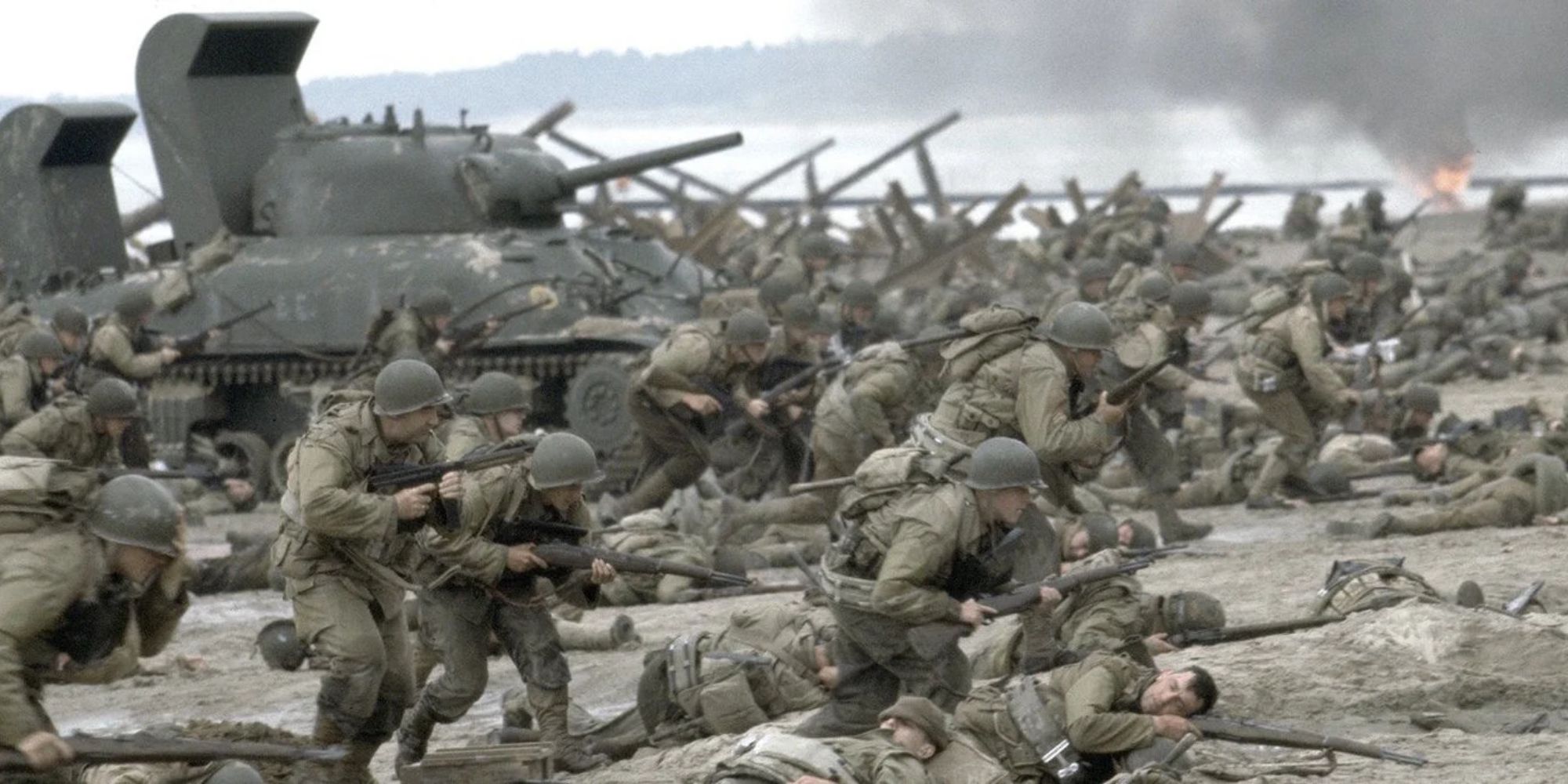Award-winning director Steven Spielberg is undoubtedly one of the most famous filmmakers in the history of cinema. He has constructed some of the most heartwarming, crowd-pleasing, and dramatic films that have captured the hearts and imaginations of audiences for decades. Spielberg's greatest works have no shortage of amazing moments. However, some of the best and most memorable moments captured in his films were improvised on the spot, made up on the fly, or happened spontaneously on the set during filming. Here are some of the greatest moments from Spielberg's filmography that were not scripted ahead of time and were inventions of improvisation.
Roy Scheider's Iconic 'Jaws' Line Was Improvised
Roy Scheider's iconic line read from Jaws became synonymous with the film and one of the most quoted lines in cinematic history. In the film, Scheider's Chief Martin Brody has his first up close and personal encounter with the great white shark he is hunting with fisherman Quint (Robert Shaw) and oceanographer Matt Hooper (Richard Dreyfuss) aboard Quint's modest fishing vessel, the Orca. While Brody is chumming the waters, the film delivers an unforgettable jump scare as the shark, nicknamed "Bruce" by the production, emerges and terrorizes Brody and the audience.
The shocked Chief Brody then lurches over to Quint before delivering the classic line, "You're gonna need a bigger boat." As explained by story editor Carl Gottlieb to The Hollywood Reporter, the line was never part of the script, but one that production staff members were voicing about the small sail barge used to hold all the filming equipment and craft services while work was conducted on the water. The barge was only held steady by a small support boat that the film crew said was too small to handle the job.
Gottlieb noted that the line, "You're gonna need a bigger boat," soon became a catchphrase throughout the film shoot whenever something went wrong, and Scheider would later start ad-libbing the line while performing his scenes. But the one improvised version of the line that made it into the final cut occurred after Brody got the first look at the shark. The shock and terror Brody exhibits through the scene and line delivery perfectly resonate with the audience, which is probably why it became one of the best movie lines in history.
Improvised Fight in 'Raiders of the Lost Ark' Was a Franchise Best
One of the best moments in the entire Indiana Jones franchise is that moment when Indy squares off against the swordsman during the amazing Cairo sequence in Raiders of the Lost Ark. An enemy swordsman faces down adventuring archeologist and college professor Indiana Jones (Harrison Ford) and shows off his skills with a blade. Then, Indy casually draws his gun and simply blows him away with one shot. It became a moment that not only defined the character but the entire film franchise. This classic character moment was originally scripted as a completely different fight scene that would have seen Dr. Jones using his whip to face off against the swordsman. Stuntman Terry Richards, who also portrayed the swordsman, went through several weeks of training to prep and choreograph the action scene. Ford himself said in a 2017 Reddit AMA, "The script had a scene in which I fight a swordsman, an expert swordsman, it was meant to be the ultimate duel between sword and whip."
However, the difficult film shoot, rising temperatures, and Ford suffering from a bout of dysentery precipitated a change of plans. Ford's illness made it difficult to perform for prolonged periods, and the fight scene would've taken at least two-to-three days to shoot. These circumstances prompted Ford to suggest an alternative to Spielberg. Ford stated, "I proposed to Steven that we just shoot the son of a bitch, and Steve said, 'I was thinking that as well.'" Richards was surprised to hear, after practicing his sword work for weeks, that the scene would instead be shot in a matter of minutes, but he filmed the alternate version. The crew soon returned to England for the rest of the production.
While the idea of Indiana Jones fighting the swordsman in a sword vs. whip duel no doubt sounds enticing, the circumstances culminated in another amazing moment for Spielberg's filmography. The brief action beat captures the spirit of the Indiana Jones character, while also giving the audience a moment of levity during a suspenseful chase. For fans who wonder what could have been, there is candid onset footage on YouTube showing Ford and Richards rehearsing the original sequence with the stunt coordinator, along with some shots of Ford in costume snapping his whip while Richards brandishes his swords. Unfortunately, the more drawn-out fight scene was not meant to be, but it's hard to imagine Raiders of the Lost Ark without the classic moment of Indy dispatching the swordsman with one shot of his pistol. It all happened because of rough shooting conditions and Ford falling ill, but it now exists as one of the most memorable and iconic moments in the franchise.
'Saving Private Ryan' Includes Two Key Improvisational Moments
Spielberg's Saving Private Ryan includes two very different moments that are both results of improvisation. One of the WWII drama's indelible sequences is the opening D-Day sequence, depicting U.S. soldiers, including Captain John H. Miller (Tom Hanks), landing on Omaha Beach during the Normandy Invasion. The complex sequence was completely improvised during the production. As Spielberg described filming the sequence during an interview with the Director's Guild of America, he shot the whole thing in continuity, devising the entire sequence as he was filming. He stated, "I did the whole thing stream of consciousness. I had no storyboards, no pre-visualization on the computer, did the whole thing from up here [points to his head]." The 26-minute sequence took four weeks to film.
Spielberg's decision to shoot the opening sequence in this fashion was informed by literature he researched regarding the experiences of soldiers who survived the storming of Omaha Beach. Spielberg wanted to capture the sense that soldiers in combat "didn't know what was going to happen next." On the big screen, the D-Day sequence looks so intricate and intense, it's hard to believe Spielberg ran the production shoot in that manner. Yet, his instincts paid off. The sequence captures a type of realism for a war scene that had never truly been before. The impact of the D-Day sequence is almost insurmountable. Spielberg spoke about constantly beating the impulse to "go Hollywood" with the film, wanting to make the film look realistic. The authenticity of the D-Day sequence alone is likely a big reason he took home the Oscar for Best Director for the film.
The D-Day sequence is juxtaposed with another moment in the film after Captain Miller and his battalion finally locate Private James Francis Ryan (Matt Damon) in Ramelle, France. In a quiet, dramatic scene, Private Ryan speaks to Miller about struggling to recall his brothers' faces, and Miller suggests thinking about the context of a specific moment to help him remember. Ryan then shares a story about how he and his brothers discovered their oldest brother Dan in the barn with a girl, Alice Jardine. It was the last occasion Ryan spent with all of his brothers before they left for basic training in the military.
According to Peter Bart in his book The Gross, Damon improvised the entire monologue while filming. For most of the movie, Ryan exists as little more than an idea. The character is an almost mythic, unreachable figure. The scene with Miller and Ryan effectively humanizes Ryan, as he tries to remember happier times with his brothers, after being informed of their deaths in combat. It gives the audience a chance to breathe before the final battle sequence and also offers an effective way for Miller and Ryan to bond during their brief time together. In a short time onscreen, Damon brilliantly established that Ryan was just an ordinary kid who was trying to survive a terrible war, much like the other soldiers. In many ways, Damon's improvised monologue is the heart and soul of both his character and Saving Private Ryan. Damon's own instincts as a writer and storyteller for the scene served him well for the shoot, as he won the Academy Award for Best Original Screenplay for Good Will Hunting shortly before the release of Saving Private Ryan. Just like the other aforementioned moments, these improvised scenes stand out as some of the best highlights of Spielberg's work.




